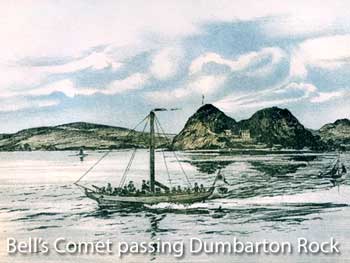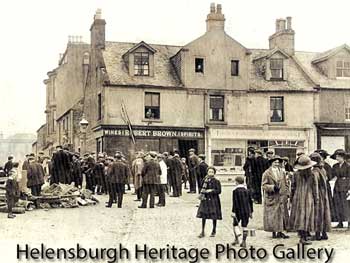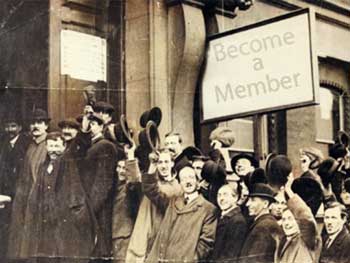At Helensburgh the twenty-seventh day of July eighteen hundred and thirty-three, at eight o'clock AM being the time fixed for ascertaining and going along the Boundary lines of the Burgh specified in the charter and fixing in proper places Boundary stones in order that the Boundaries may be known in time coming.
The Very Early Days
Rosneath is one of the older settlements in the local area, and its name is said to be derived from the Gaelic "Rosneveth", meaning "headland of the sanctuary", which in turn probably relates to St Modan. It should however be noted that there are other possible derivations of the village’s name.
The wreck of Europe’s first commercial steamship has been designated as a scheduled monument by Historic Environment Scotland.
HER Royal Highness Princess Louise, daughter of Queen Victoria, had a huge impact on Helensburgh and Garelochside, where she lived in Rosneath Castle and loved the beauty and quietness of the Gareloch.
HELENSBURGH has always prided itself that a Prime Minister came from the burgh, despite the fact that he is known as “The Unknown Prime Minister”.
A HELENSBURGH man who served as a County Councillor for 23 years was a First World War hero who won the Victoria Cross, the top award for gallantry in the face of the enemy.
THE sad event of 8 September 2022 has set me thinking back to the Queen’s Accession on 6 February 1952.
A FOLK singer who came to live in Helensburgh 2007 is famous throughout Scotland and has been described as having ‘a God given voice that knocks you sideways’.
A FORMER professional footballer who spent the last 18 years of his life in Helensburgh managed Manchester United for five years and Ipswich Town for 18 years.
HELENSBURGH HERITAGE TRUST
Scottish Charitable Incorporated Organisation – number SC024603
ANNUAL REPORT AND FINANCIAL STATEMENTS
FOR THE YEAR ENDED 31 MARCH 2025
Trustees' Annual Report for the year ended 31 March 2025
The Trustees have pleasure in presenting the report together with the financial statements for the year ended 31 March 2025
HELENSBURGH HERITAGE TRUST
Scottish Charitable Incorporated Organisation – number SC024603
ANNUAL REPORT AND FINANCIAL STATEMENTS
FOR THE YEAR ENDED 31 MARCH 2024
Trustees' Annual Report for the year ended 31 March 2024
The Trustees have pleasure in presenting the report together with the financial statements for the year ended 31 March 2024
HELENSBURGH HERITAGE TRUST
Scottish Charitable Incorporated Organisation – number SC024603

















